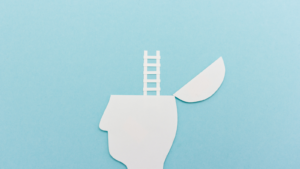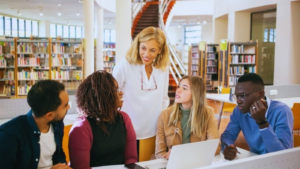Make an Lasting First Impression
Have you ever thought of yourself as being a human transmitter and receiver? Well, through evolution and especially through the need to survive, this is exactly what we have become, but it all happens on a subconscious level and most of the time we are normally unaware of it. Every minute of every day your body is sending out signals which others are receiving, filtering and interpreting.
Imagine yourself many thousands of years ago. You are on a hunting trip in a dense forest. Suddenly you a see a stranger; someone who does not belong to your tribe. Very quickly you have to read the signs coming from this stranger and decide whether this person will be a friend or an enemy as your very life could depend on it.
From this and other similar scenarios, evolution has brought us to the present day where reading signals, while perhaps no longer life-threatening is still important and we still subconsciously do it. And in fact, we do it very well. The subconscious judgement we make on people within the first 90 seconds of meeting them is usually right as our subconscious brain continues to help us survive.
Becoming aware of the signals we give off through our body language can be an advantage to us when we meet people for the first time, as now we can try to ensure people perceive us as we really want to be perceived. We can also help our students who will meet many people in their lives and at some stage, they may have to get through a vital interview to get their dream job. There are thousands of reasons why we should know how to make a good first impression.
So what signals do we have to give off to produce a good lasting impression?
A smile breaks the ice. A smile says I am friendly or I would like to be your friend, but it’s not just any old smile. A significant smile has to be authentic and that means using the eyes not just the mouth. In addition, it must not be too quick as it has to be seen and interpreted. Therefore, the smile has to spread across your face and linger for a few seconds. Really? I hear you say. Yes, this is really true and there are social scientists who have experimented with this and proven its efficacy.
So, firstly smile and then use those eyes again, but this time to give good eye contact Avoiding eye contact sends a message that something is not quite right. This could be perceived as shifty, shy insecure, all negative connotations which can destroy a first impression. However, staring someone in the eye can seem weird, so eye contact should be maintained about eighty percent of the time.
Now it’s time to check your posture. Round shoulders and a slouch can signal insecurity and a lack of confidence and even disinterest, but standing up straight with your shoulders square signals you are confident. When other people see someone who looks confident, it’s easier for them to start to trust and believe in that person. Strangely enough, if you stand and act confidently, your brain believes you are confident even if you are not.
And finally to complete the process and achieve a great first impression you need a good, but not too firm, handshake. It has to be neutral. When a person consciously tries to put their hand on top as in the picture that person is trying to get the “upper hand,” trying to gain some advantage. Forget about Covid and the elbow bumps and let’s get back to the good old fashioned handshake.
Did you know that when the palm of your hand touches the palm of someone else’s hand, both people produce a hormone called Oxytocin? This amazing hormone is also called the god hormone or the love hormone and it’s the one that makes you feel better. That’s why we instinctively rub a child’s head if they fall down. You help the child to produce Oxytocin and they start to feel better. It should really be called the miracle hormone. Handshakes are personal human contact on a very basic level which makes both sides feel momentarily good.
So, having done all of the above, you will have created the best first impression you can and you are well on the way to creating a good relationship with the person you have just met and so far you have only used non-verbal communication. The next step is when you open your mouth and speak using verbal communication, but that is the subject of another article.
I often ask teachers whether they believe it is their job to teach their students about non-verbal as well as verbal communication. I truly hope the above information has persuaded you that it is as important as verbal communication in conveying a message. If we do not make use of our well evolved body language it means that we are not using a vital tool in our communication tool box.
If you have enjoyed this article and would like to know anything about verbal and non-verbal communication please contact me [email protected] or by Facebook messenger. I will be delighted to hear from you.




